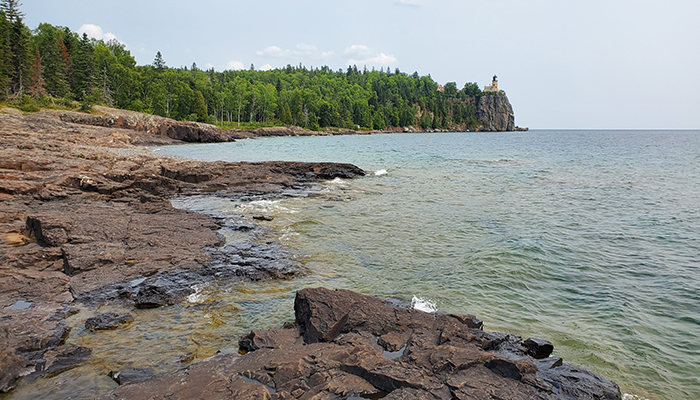Backpacking 101

Backpacking 101
Welcome to your crash course in backpacking – the guide to get you started on your journey into the great outdoors. Whether you’re an urbanite looking for a refreshing escape, a novice dipping your toes into the wilderness, or a seasoned hiker seeking to hone your skills, this post is for you.
I’ve been backpacking with newbies and seasoned backpackers for years, from trips involving a large group to just two-man trail runs. There are certain things you begin to understand and “know” after you’ve been on multiple backpacking trips, things that are hard to learn unless you are “in the thick of it.”
I’m going to try an impart some of those tips and help others who might be moving
Disclosure: This website is a participant in the Amazon Services LLC Associates Program, an affiliate advertising program designed to provide a means for sites to earn advertising fees by advertising and linking to Amazon.com. As an Amazon Associate, we may earn commissions from qualifying purchases.
What is Backpacking?
Before we dive into the nitty-gritty, let’s define what backpacking is. Backpacking combines hiking and camping into one singular adventure. It’s a multi-day trek into the wilderness, carrying all of your necessary supplies and survival essentials on your back. It’s a chance to immerse yourself in nature and cultivate resilience, self-sufficiency, and a newfound appreciation for the natural world.
When you are backpacking, by nature, most of the time you are “on your own.” At least vs camping where you might be 3 steps from your car. There is more inherent “risk” with backpacking … food, water, the danger of injury, etc becomes much more heightened.
- Getting away from the “hustle and bustle”
- Requires specific skills and preparations
- Can be “hard” from many angles

Why Backpacking?
Simply put, backpacking is a way to connect with nature in its purest form. It is a practice that can help you push your limits, teach you survival skills, foster independence, and offer opportunities to witness stunning panoramas and wildlife interactions that you won’t get anywhere else. But most importantly, backpacking allows you to escape from the hustle and bustle of daily life and gives you the time to rejuvenate your mind, body, and soul.
Getting Started
Equipment
Backpacking requires some necessary gear. The first item on your list is a good-quality backpack. It should be durable, waterproof, and comfortable, with ample room for your essentials but not so large that it becomes unwieldy.
You’ll also need a tent, a sleeping bag, a camping stove, and appropriate clothing. Remember, it’s important to pack light but also smart – ensure you have enough to keep you warm, dry, and protected.

- tent
- backpack
- sleeping bag
- sleeping pad
- camping stove + utensils
- headlamp
- water bottle + water filter
- rain gear
Food and Water

Plan meals that are lightweight, non-perishable, and easy to cook. Dehydrated meals are a popular choice among backpackers. Don’t forget to pack high-energy snacks like trail mix, granola bars, and dried fruits. Always carry a water filter or purifying tablets as you’ll often be sourcing water from rivers or streams.
- Whatever you bring … water is one of the most important!
- Think through your food. Try it beforehand. Don’t just wing it.
You will be miserable without a proper amount of water and the ability to get more water.
Navigation
You may not have access to cell service in the wilderness, so it’s essential to learn how to navigate using a map and compass. GPS devices are handy, but as a rule of thumb, always carry a physical map as a backup.
Garmin inReach is a series of satellite communicators and GPS devices designed primarily for outdoor enthusiasts and professionals who venture into remote areas where conventional cellular service is either weak or nonexistent. Here are some key features and details about the inReach devices:
Satellite Communication: One of the main selling points of the inReach devices is their ability to send and receive text messages via the Iridium satellite network, which offers global coverage. This means users can stay connected even in the most remote parts of the world.
SOS: In case of an emergency, users can trigger an SOS which will notify the 24/7 Garmin International Emergency Response Coordination Center (IERCC). They can communicate with the user, understand the nature of the emergency, and coordinate necessary rescue efforts.
Location Sharing: The devices allow for location tracking and sharing, which can be invaluable for letting friends and family know where you are or for tracking progress on a long trip.
Mapping and Navigation: Garmin inReach devices come with preloaded maps and the ability to set waypoints and routes. This feature is especially useful for hikers, mountaineers, and others who rely on accurate GPS data for navigation.
Weather Forecasts: Some models offer basic or premium weather forecast updates, which can be crucial for those traveling in areas where weather can change rapidly.
Safety First

Inform someone of your plans before you leave – where you’re going, which trail you’re taking, when you’re expected to return. Carry a basic first-aid kit and learn how to use it. Be aware of your surroundings and respect wildlife.
Finally, Enjoy!
Backpacking is challenging, but it’s also incredibly rewarding. Soak in the sounds, smells, and sights of the great outdoors. Take the time to appreciate the sunrise, the rustling of leaves, the trickle of a stream. Backpacking is more than just a journey; it’s an experience that can transform you.
So lace up your hiking boots, strap on your backpack, and step into the adventure that awaits. With every trail you traverse and campfire you light, you’ll be creating unforgettable memories. Happy backpacking!
